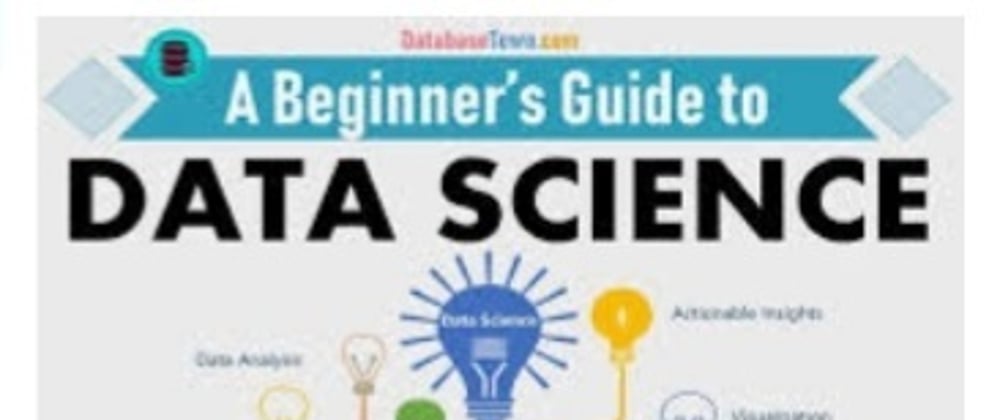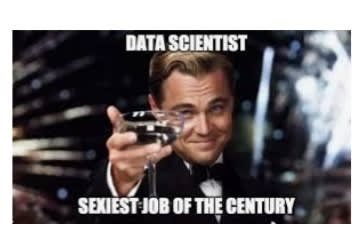This article is a beginner's guide to getting started with Data Science. There is no precise or fixed way of learning Data Science. A person only needs to choose a specific role and learn the tools required for it, do a lot of practice and projects in order to become job ready.
What is Data Science?
Data science is an interdisciplinary field that uses scientific methods, processes, algorithms and systems to extract knowledge and insights from noisy, structured and unstructured data, and apply knowledge and actionable insights from data across a broad range of application domains. Data science is related to data mining, machine learning and big data. - Wikipedia
Data Science combines scientific methods, mathematics and statistics, programming, analytics and Artificial Intelligence(AI) to extract knowledge and insights with the goal of discovering hidden patterns from raw data.
Data Science is used to organize and analyse large amounts of data.
Need for Data Science
- To handle and analyze extremely large datasets/data flow.
- Faster and better decision making.
- Build intelligence and ability in machines.
- Gain business insights.
- Reduce production costs.
Roles of a Data Scientist
Organise and analyse large amounts of data.
Statistical inference.
Designing and creating processes for complex and large-scale datasets.
Building predictive models using Machine Learning algorithms.
Monitoring how Machine Learning models perform.
Data Science skill set
i) Statistics
ii) Programming languages including R, Python, Java, Matlab, SQL, SAS
iii) Data extraction and processing
iv) Machine learning algorithms
v) Big data processing frameworks
vi) Data visualisation
Data Science life cycle
Understand and define objectives of the problem that needs to be tackled.
Data acquisition. They should be able to gather and scrape data from multiple sources such as web servers, databases, APIs.
Data preparation - data cleaning and transformation. Data cleaning is the longest process because it is complex. It is the process of fixing or removing incompetent data within a dataset.
Exploratory data analysis. Defines and refines the selection of feature variables that will be used in the model development. This is the most important step.
Data modelling. This is the core activity of a Data Science project. We apply type verse machine learning techniques to the data to identify the model that best suites the problem.
Visualisation and communication. It involves explaining the problem solution in simple and effective terms using tools like Power BI and tableau.
Deploying and maintaining the model.
Data Science job roles and tools
A) Data Scientist
. Is well versed in statistical methods.
. Runs experiments and analyses for insights.
. Has knowlege of traditional machine learning.
. Focuses on data preparation, exploration and visualisation, data experimentation and prediction.
Tools
. SQL to retrieve and aggregate data
. Python and R Data Science libraries like Pandas(Python), tidyverse(R)
B)Data Analyst
. Performs simple analyses that describe data.
. Creates reports and dashboards to summarize data.
. Cleans data for analysis.
. Focuses on data preparation, exploration and visualisation.
Tools
. SQL to retrieve and aggregate data
. Spreadsheets (Excel/ Google sheets) to perform simple analysis
. Business Intelligence tools(Tableau, Power BI, Looker) to create dashboards and visualisations.
. May have Python/ R to clean and analyze data.
C)Data Engineer
. Are known as information architects.
. Build data pipelines and storage solutions.
. Maintain data access.
. Focuses on data acquisition/ collection and storage.
Tools
. SQL to store and organize data
. Java, Scala, Python to process data
. Shell command line to automate and run tasks
. Cloud computing- AWS, Azure, Google Cloud Platform.
D)Machine Learning Scientist
. Performs predictions and extrapolations.
. Carries out classification.
. Deep learning- Image processing, Natural Language processing.
. Focuses on data preparation, exploration and visualisation with a strong focus on prediction.
Tools
. Python/ R Machine Learning libraries such as TensorFlow, Spark.
Other DS roles include Database Administrator, Statistician, Business Analyst, Data and Analytics Manager,Data Architect
Applications of Data Science
Traditional Machine Learning. Here computers learn from data using algorithms to perform a task without being explicitly programmed. We require a well defined question, a set of example data and a new set of data to train our algorithm on.
Internet of Things(IoT). This refers to gadgets that are not standard computers but have the ability to translate data. Examples include smart watches, internet-connected home security systems, electronic toll collection systems.
Deep learning. Here many neurons work together to draw complex conclusions. It requires much more training data than traditional machine learning.
Learn the basics of programming. Start by learning the basics of Python or R programming. Make use of the free resources available online.
Have a basic understanding of Statistics. You should learn enough programming and statistics in order to start working on projects. There is no need for you to cram everything, always use Google when stuck.
Work on beginner projects. This helps you learn how to solve problems and overcome challenges.
Start working on advanced projects to stretch out your skillset.
Share your projects. Create a public repository with your work and share it on a platform of your choice, on GitHub, GitLab, or GitBucket.
Hold yourself accountable. How can you do this? By writing down what you have learnt in simple terms and by sharing your knowledge with others. You can share your work on a blogging site of your choice.
Resources
Python for Data Science Course by freecodecamp
Python for Data Science by edureka
Data Camp Data Literacy Course
Finding the right data takes both time and effort. Try to use at least two hours daily to study. Consistency is key. If you are ready to start learning Data Science, start now! The world of Data Science needs you. I hope this inspires you in your journey.








Top comments (0)